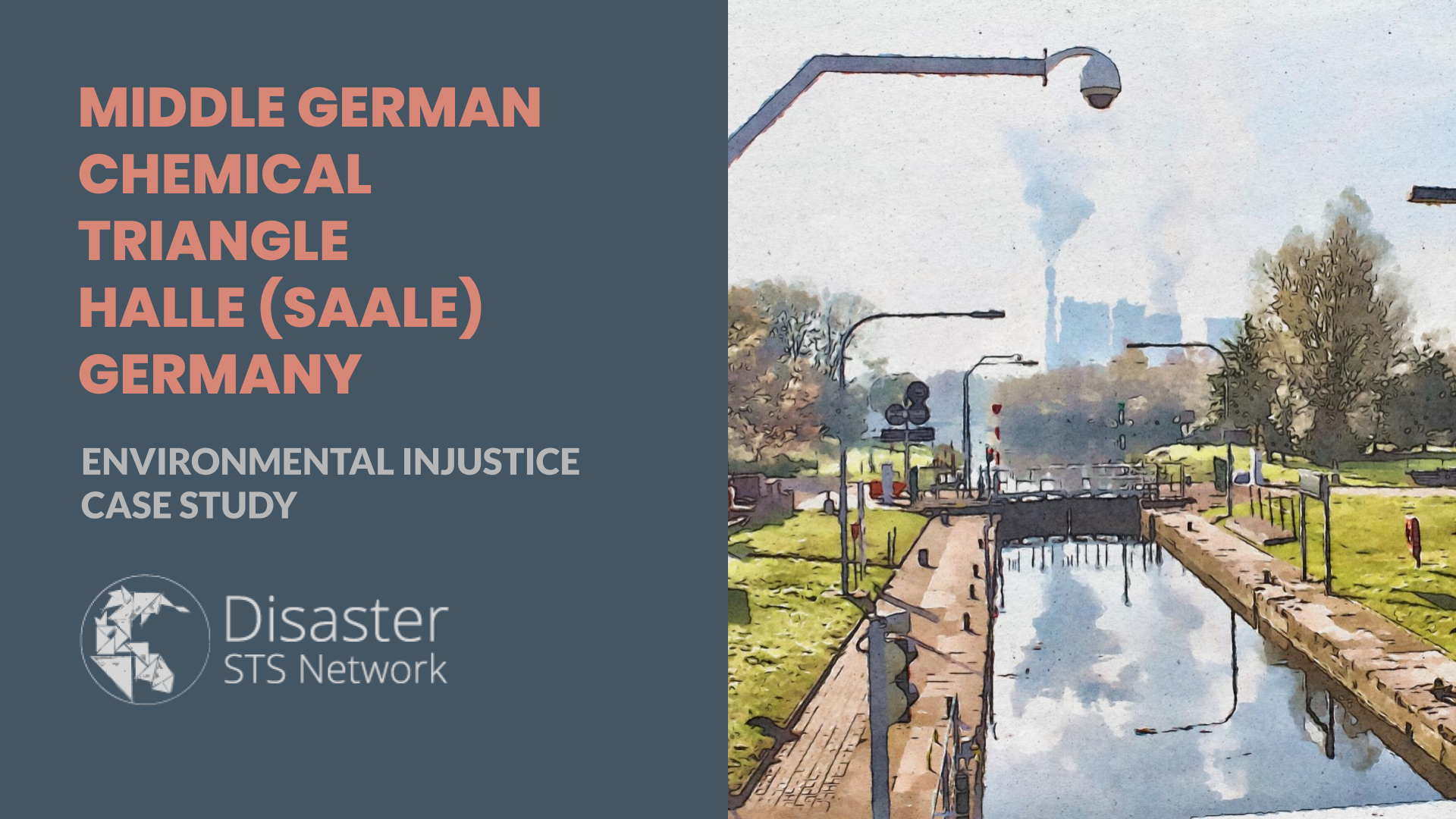
Philipp Max Baum
November 2021
Project
EnviroInjustice: Building a Global Record
Collections
Middle German Chemical Triangle
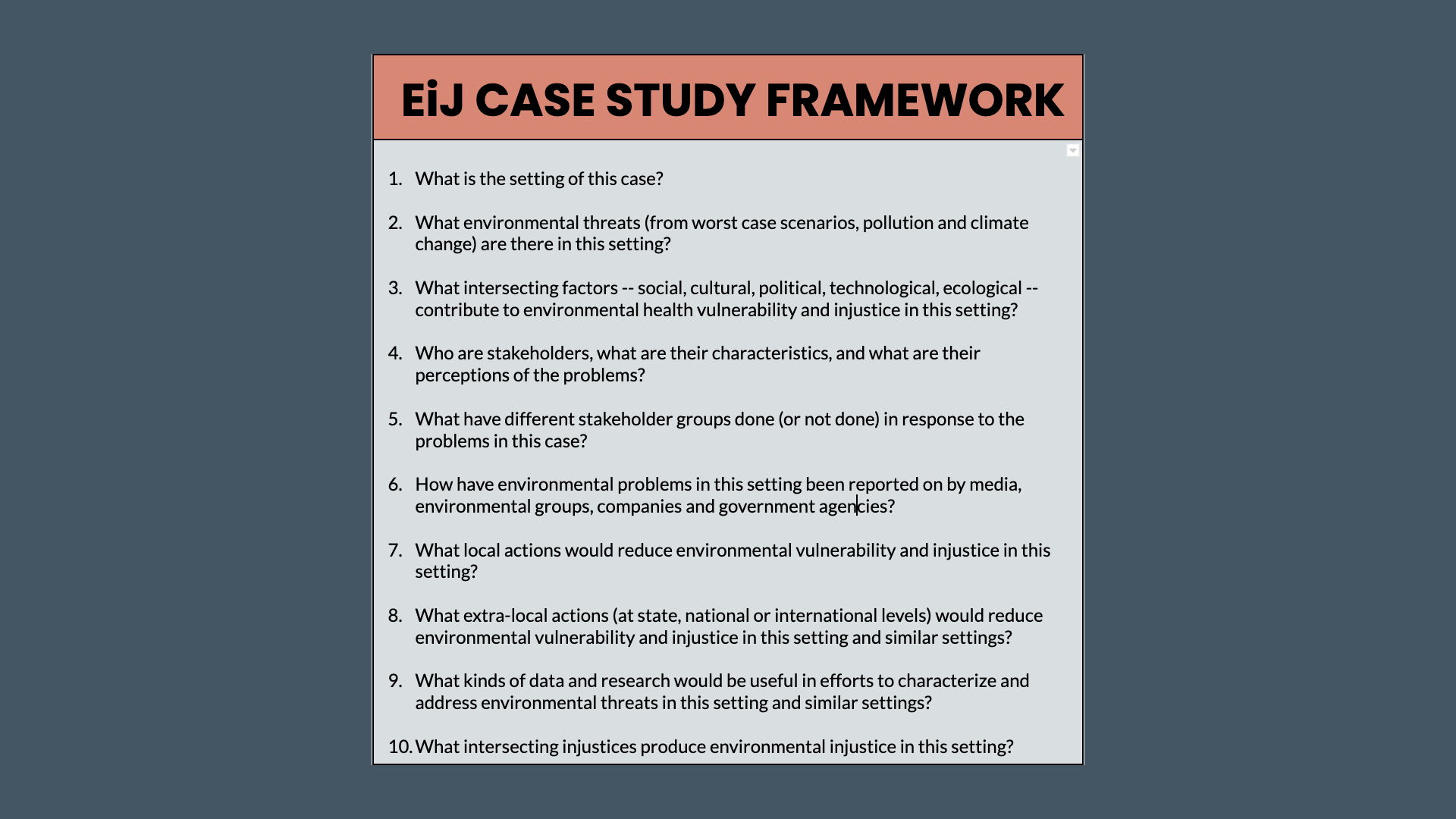
The Framework used to create this photo essay. Each slide covers one question.
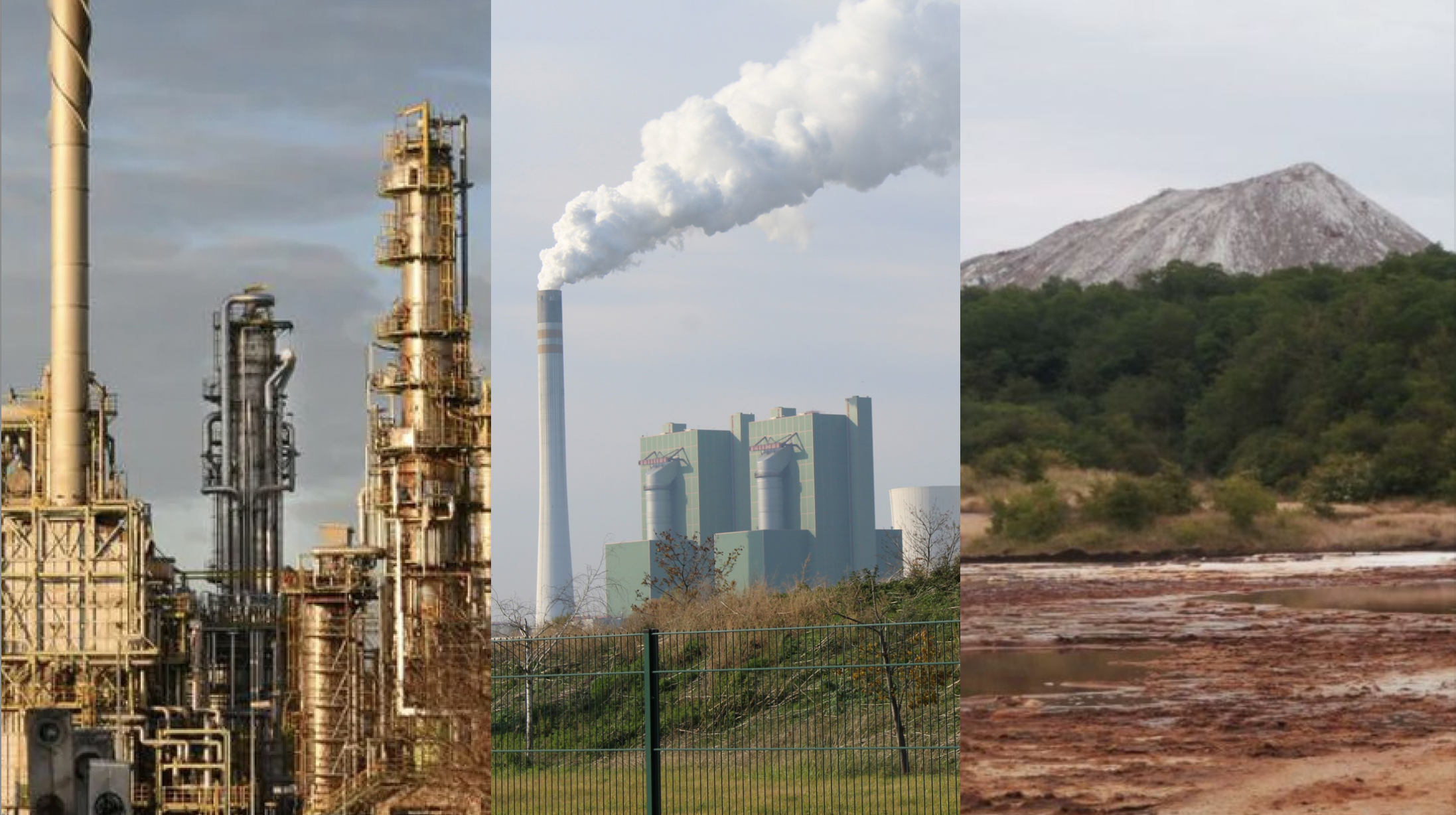
1. What is the setting of this case?
The chemical triangle has been a core sector for the German chemical industry since the 1930's. Huge industrial areas are still operative at Merseburg, Schkopau and Bitterfeld. These are often powered by coal power plants. Huge landfills with toxic waste are visible in the landscape.
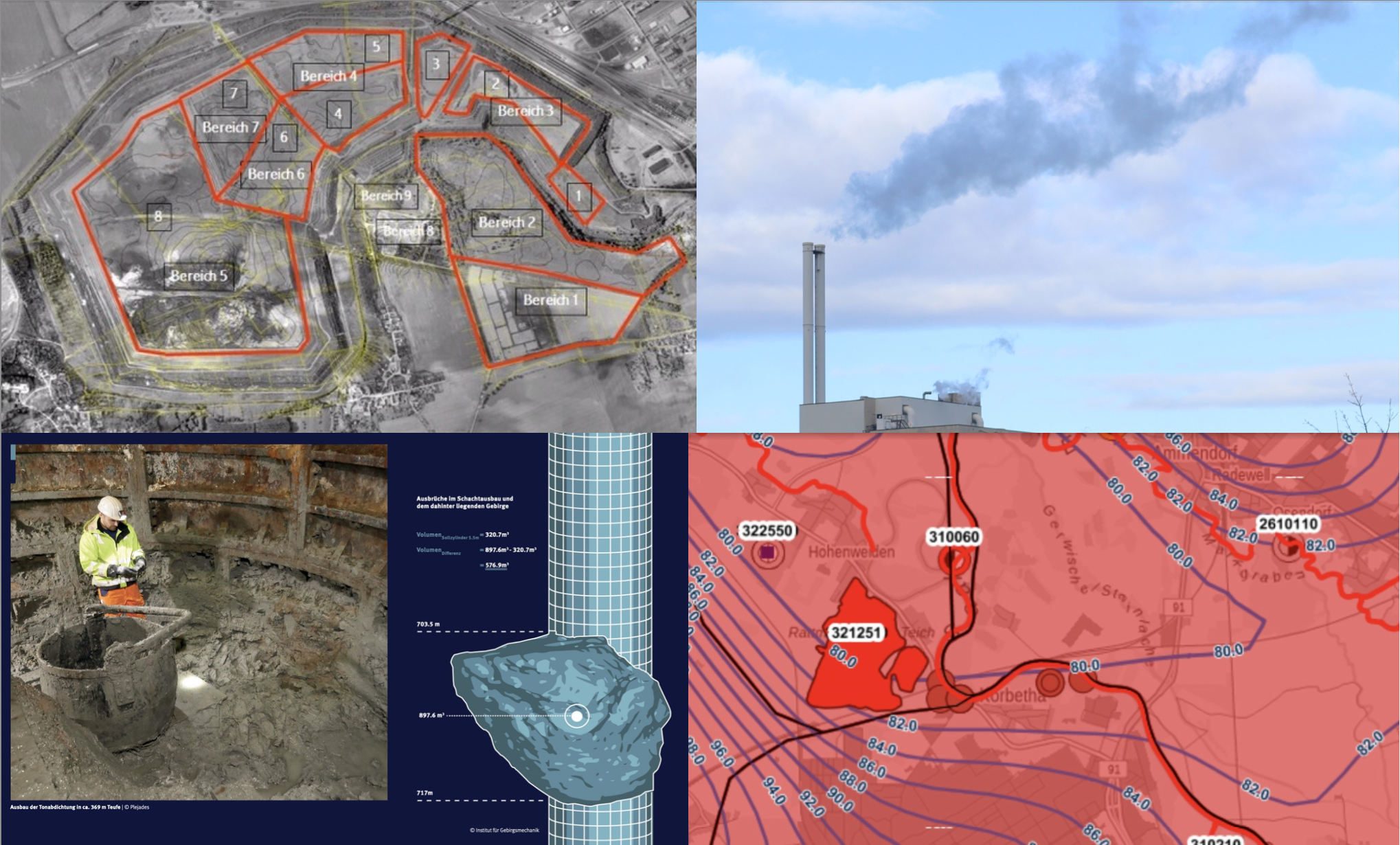
2. What environmental threats (from worst case scenarios, pollution and climate change) are there in this setting?
Mainly before 1990, the industry has produced an enormous amount of toxic byproducts that are partly stored in some of Germany's largest landfill sites and partly just leaked into the soil and underground water bodies. In Bitterfeld, the degradation of soil and water bodies presents an immediate risk for citizens that has given rise to the term “Bitterfeld-syndrome”.
The underground water bodies below Schkopau (near Halle) contain high concentrations of mercury and aromatic hydrocarbons (highly toxic) that are known to have leaked to the nearby village of Korbetha and also have to be continuously managed. Several landfill sites were constructed with inefficient barriers and are leaking toxic substances.
Former mining shafts are flooded after water management has been suspended, ruptures in the soil can cause earthquakes (Teutschental September 11, 1996) and flow-out of toxic substances. In Halle, unknown quantities of pre-products for mustard gas remain underground at the site of the former Orgacid-Werke in Halle-Ammendorf and toxic by-products of gas production remain on the site of the fromer gasworks on the Pulverweiden-island.
The chemical plants that are still active and the coal power plants produce air pollution that affects the nearby villages and the greater area. This pollution is not adequately monitored by the state which defers responsibility to the companies, but doesn’t supervise them. The health impact was evaluated by Greenpeace to cause several dozen deaths a year, but that claim was never examined by state agencies.
The old salt-mining shafts (eg. Teutschenthal, also in the nearby village of Zielitz) are use as storage for current hazardous waste from world-wide sources. The safety of these operations is highly questionable. In Teutschenthal alone there has been an earthquake (1996/11/11), an underground explosion (2019/11/08) and a continous flow of water through an abandoned shaft that has created a new salty lake.
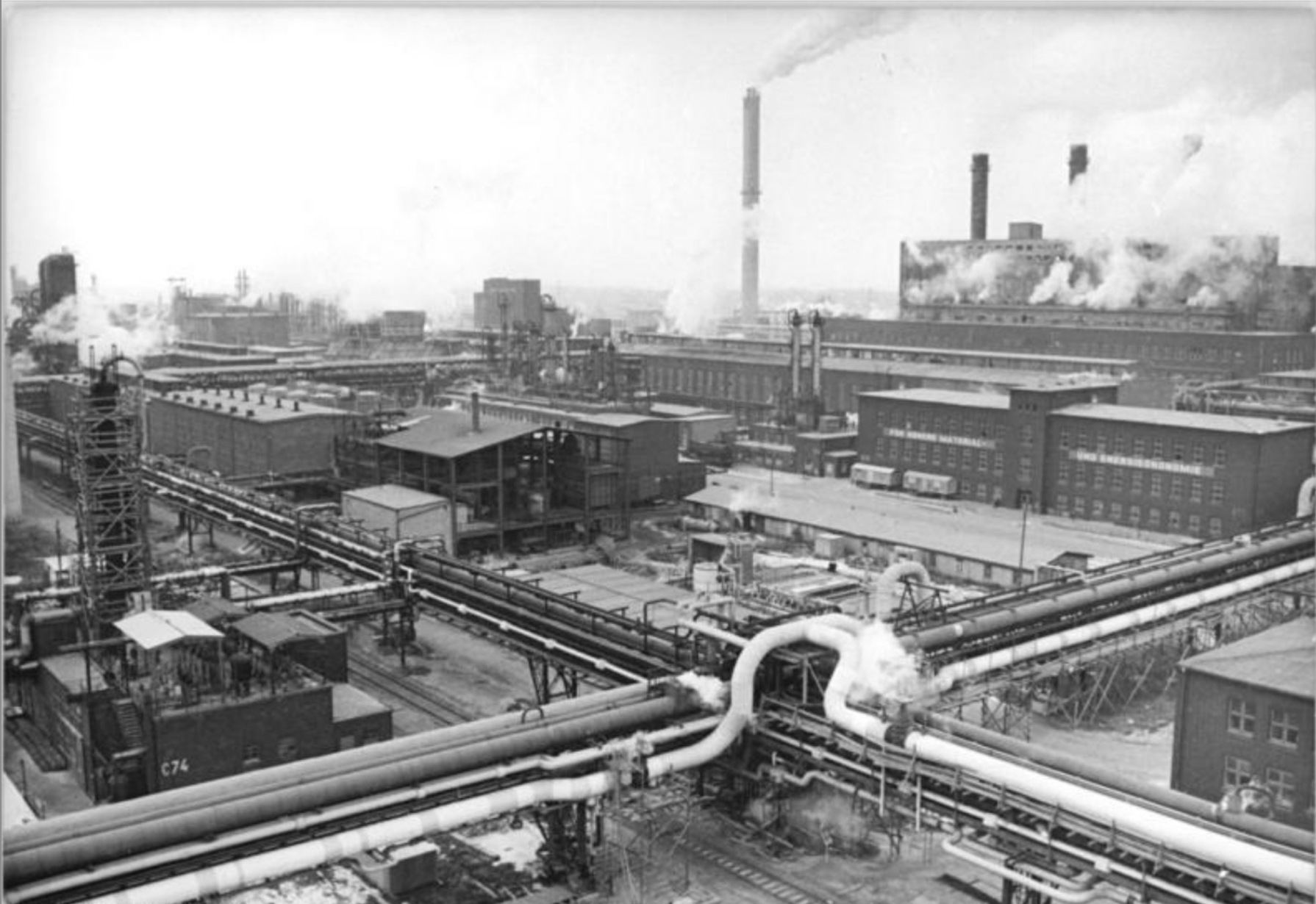
3. What intersecting factors -- social, cultural, political, technological, ecological -- contribute to environmental health vulnerability and injustice in this setting?
The Chemical triangle lies in East Germany, a region still economically disadvantaged through its history as part of the GDR and the events after its collapse. The GDR system was completely dismantled by the Federal Republic of Germany and its uncompetitive industry was sold to western companies for very low prices by the “Treuhand” or completely torn down. This approach to unification led to very high unemployment in the east and to the pressure to take any work you can get or migrate to the economically more successful regions. The workers that were able to continue working in the often hazardous jobs in the chemical plants considered themselves lucky. The privatization process of the industry excluded heavily polluted assets that still have to be managed by the state. The companies that became the legal successor of the GDR “Kombinate” were largely exempted from taking any responsibilities for the toxic legacy that remains till today. Although the federal state has received a lump sum of 1 billion euros to take care of the contaminated sites, this proved to be insufficient to clean up the remaining toxicity. In addition, it soon became clear that some remediation efforts will continue indefinitely, mainly to prevent flooding and further contamination. There is no clear plan on how these measures will be financed by the economically weak federal state.
Still, there seems to be a certain pride among institutions and citizens in the Chemical Triangle in their profession. During the GDR, the slogan “Plaste und Elaste aus Buna” was a famous slogan for the chemical products from the Buna Werke at Schkopau, near Halle. The football Stadium in Halle recently adopted the InfraLeuna company as a sponsor and is now called “Leuna-Chemie-Stadion''. This pride in the importance of the local chemical industry might facilitate turning a blind eye on its disastrous effects on the environment by state agencies.

4. Who are stakeholders, what are their characteristics, and what are their perceptions of the problems?
While small citzen NGO's protest the conversion of former mining sites to toxic waste disposal sites, corporations and state agencies have formed an "Environmental alliance" to promote environmentally responsible behaviour by corporations. Goverment agencies are mainly concerned with measurements of allowed concentrations of chemicals in air and water. As long as these are not exceeded, they assure the citizens, there is not cause for alarm.
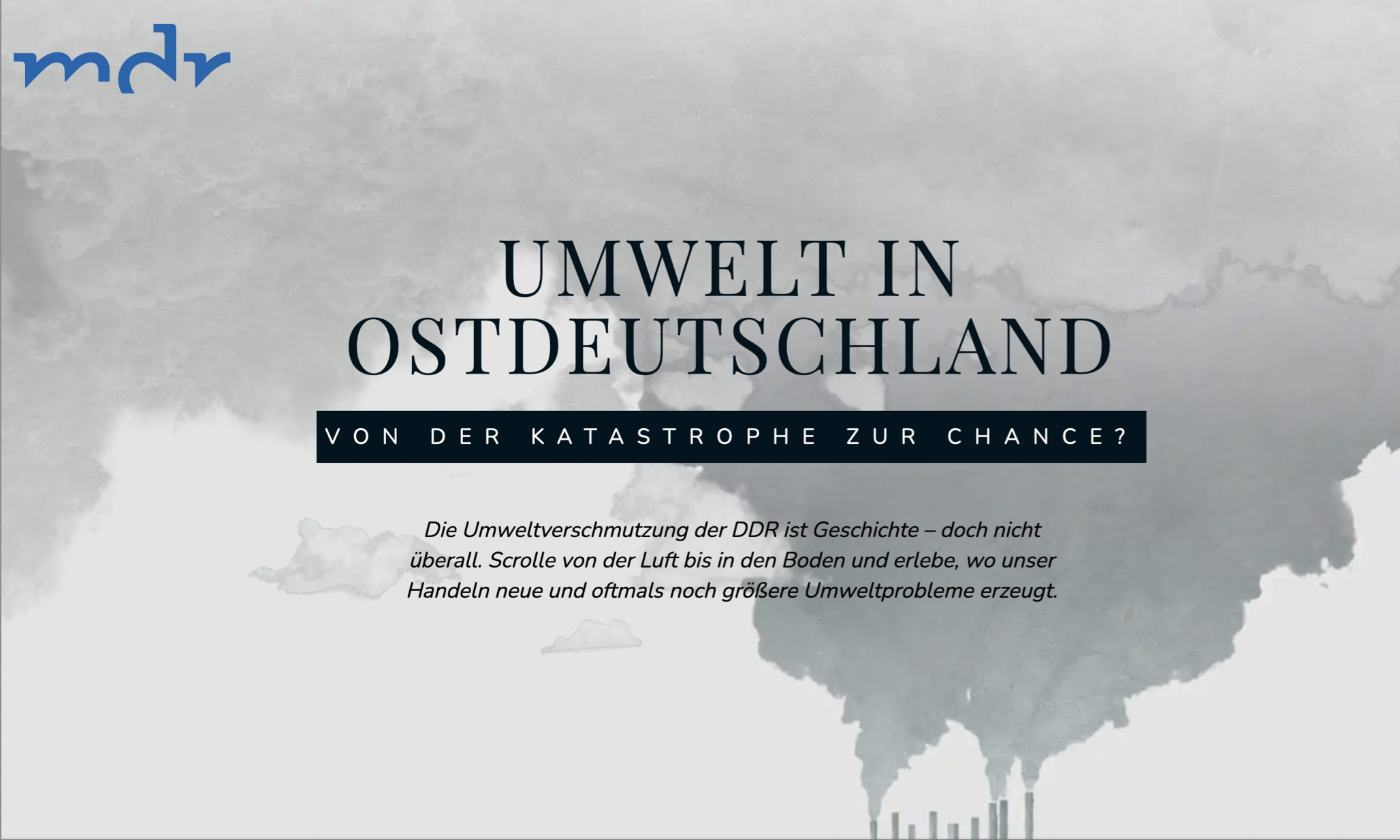
6. How have environmental problems in this setting been reported on by media, environmental groups, companies and government agencies?
There has been constant coverage on problems of toxicity by local media, yet relatively little interest by larger, country-wide media. Coverage tends to focus on historically generated problems and implemented solutions rather than current pollution, but also covers some contemporary accidents and problems.
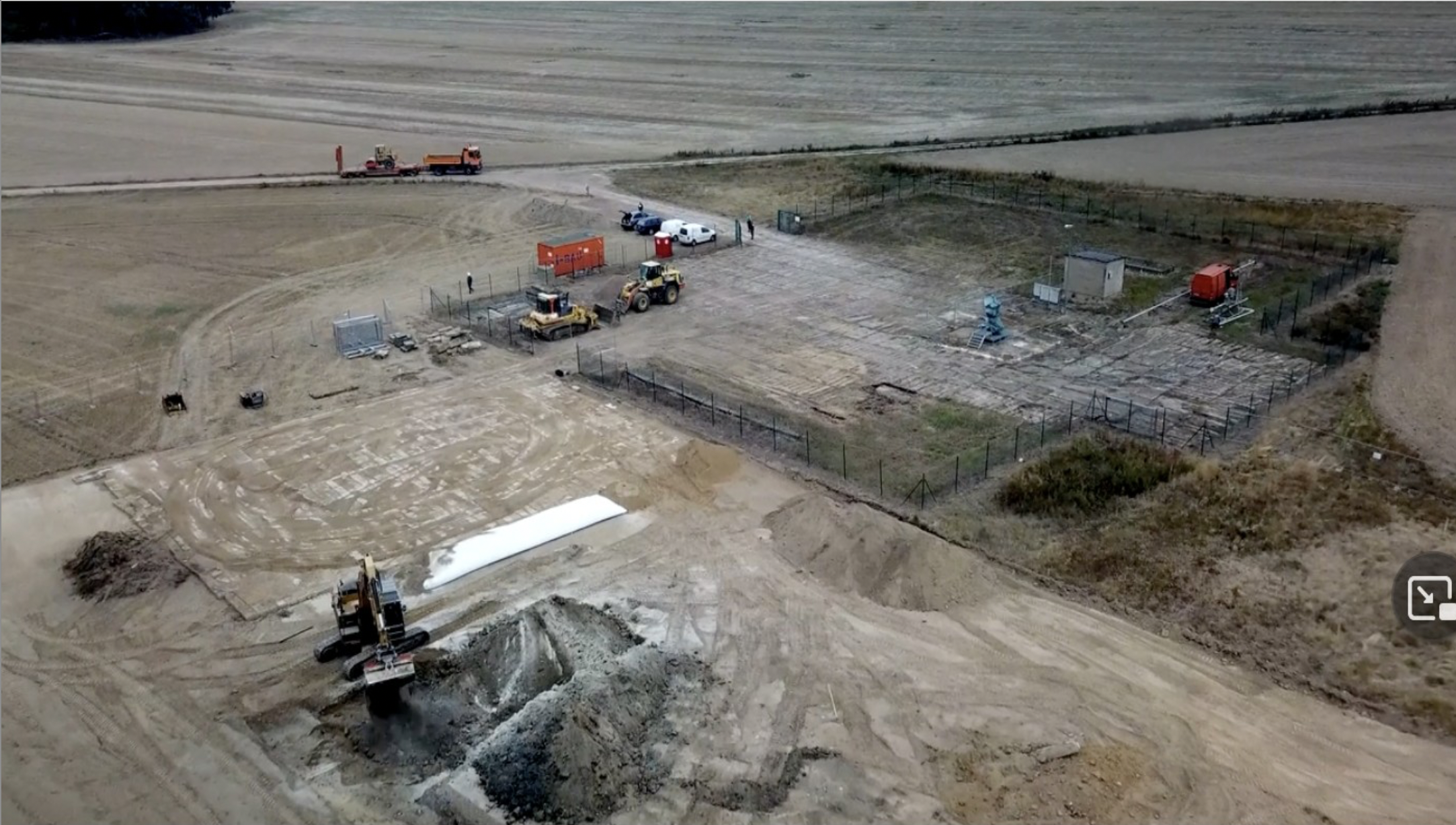
7. What local actions would reduce environmental vulnerability and injustice in this setting?
In some cases (mainly around Bitterfeld), the removal of larger areas of contaminated soil and water would held to stop the influx of toxic substances. The main reason why this is not executed on a large scale is the enourmous cost of such an operation. Not funds currently exists for such an enterprise. Also, there is currently no safe storage solution for such an amount of contaminated soil and water.
The removal of dams and other infrastructure in the waterways to re-enable the water bodies to flow in their natural ways would help eco-systems to better cope with the pollution.
Government supervision of corporations and their handling of toxic waste could improve further contamintion. Yet, because of a trend in germany politics to trust corporations to take responsible actions, supervision is currently very inconsistent.
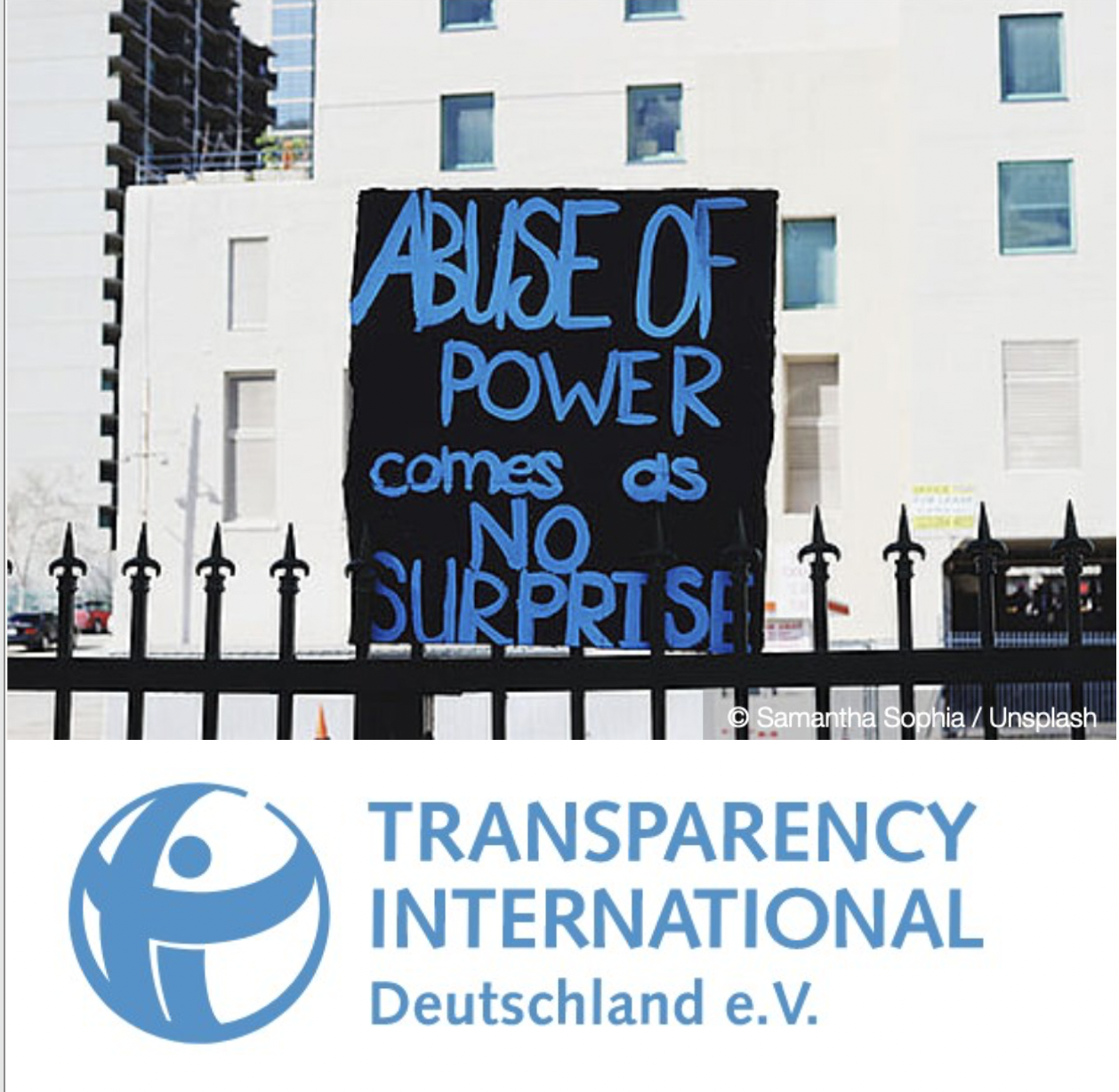
8. What extra-local actions (at state, national or international levels) would reduce environmental vulnerability and injustice in this setting and similar settings?
The chemical industry would need to more tightly controlled by a stronger legal framework in Germany.
The parliament should adopt laws that legally bind companies to fund remediation efforts in the area they operate in and of the natural resources they profit from.
Additionally, the local state agencies should take a lot more measurements and closely supervise if corporations operate within this legal framework.
NGOs like Transperency International partly fill this niche and call for more transparency of government-corporate interactions (lobbyism).
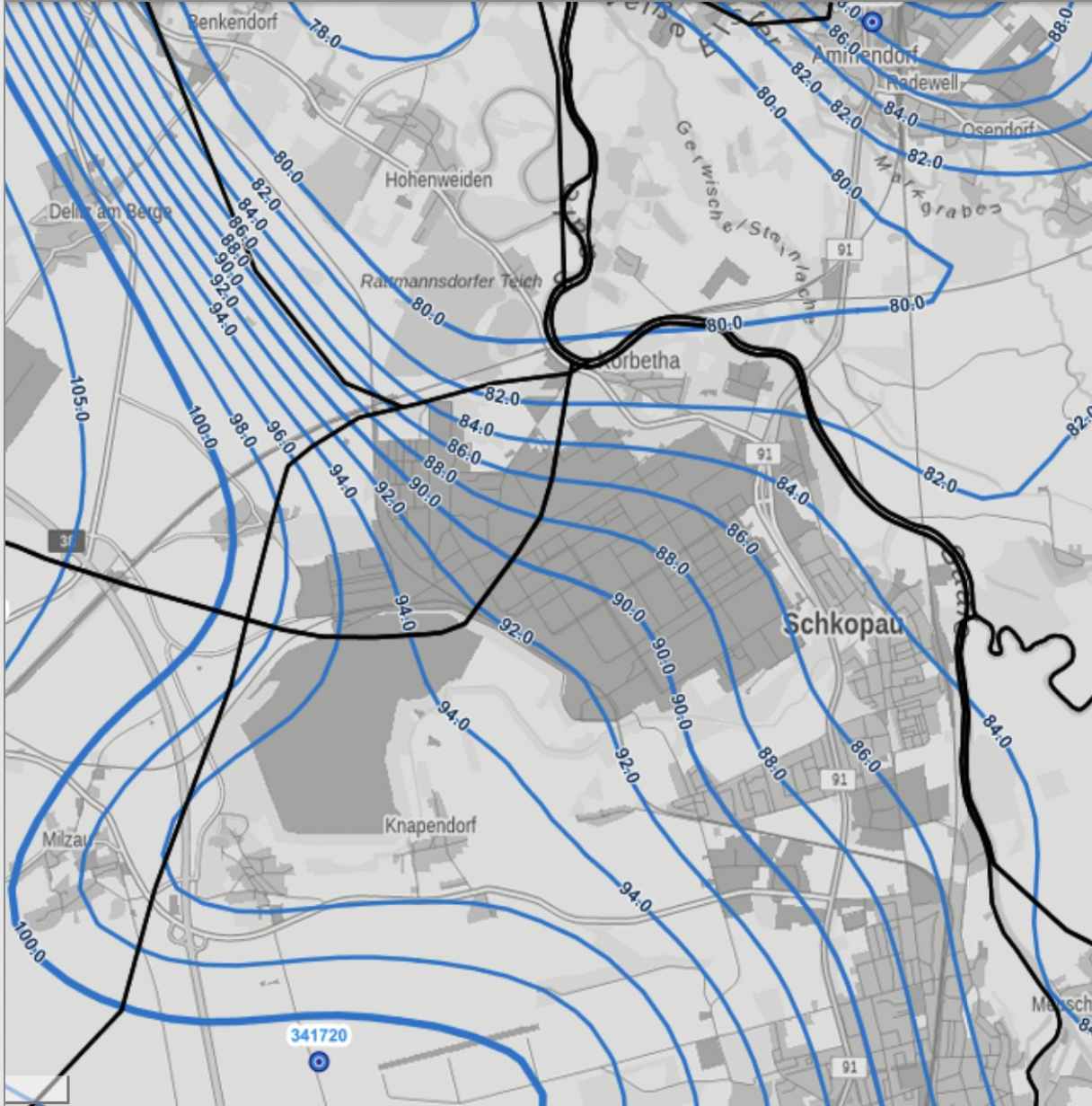
9. What kinds of data and research would be useful in efforts to characterize and address environmental threats in this setting and similar settings?
In respect to toxic legacies and current pollution, Independent measurements of air and water quality are needed, especially of contaminated landfill sites.
A better understanding of the strategies local and federal NGOs use to hold the state and private companies accountable and how effective these strategies have been might help them to efficiently use their resources.
Better knowledge how corporations influence politicians could help to expose their strategies and to increase the likelyhood that stronger legislation to protect citizens and natural resources might be implemented.
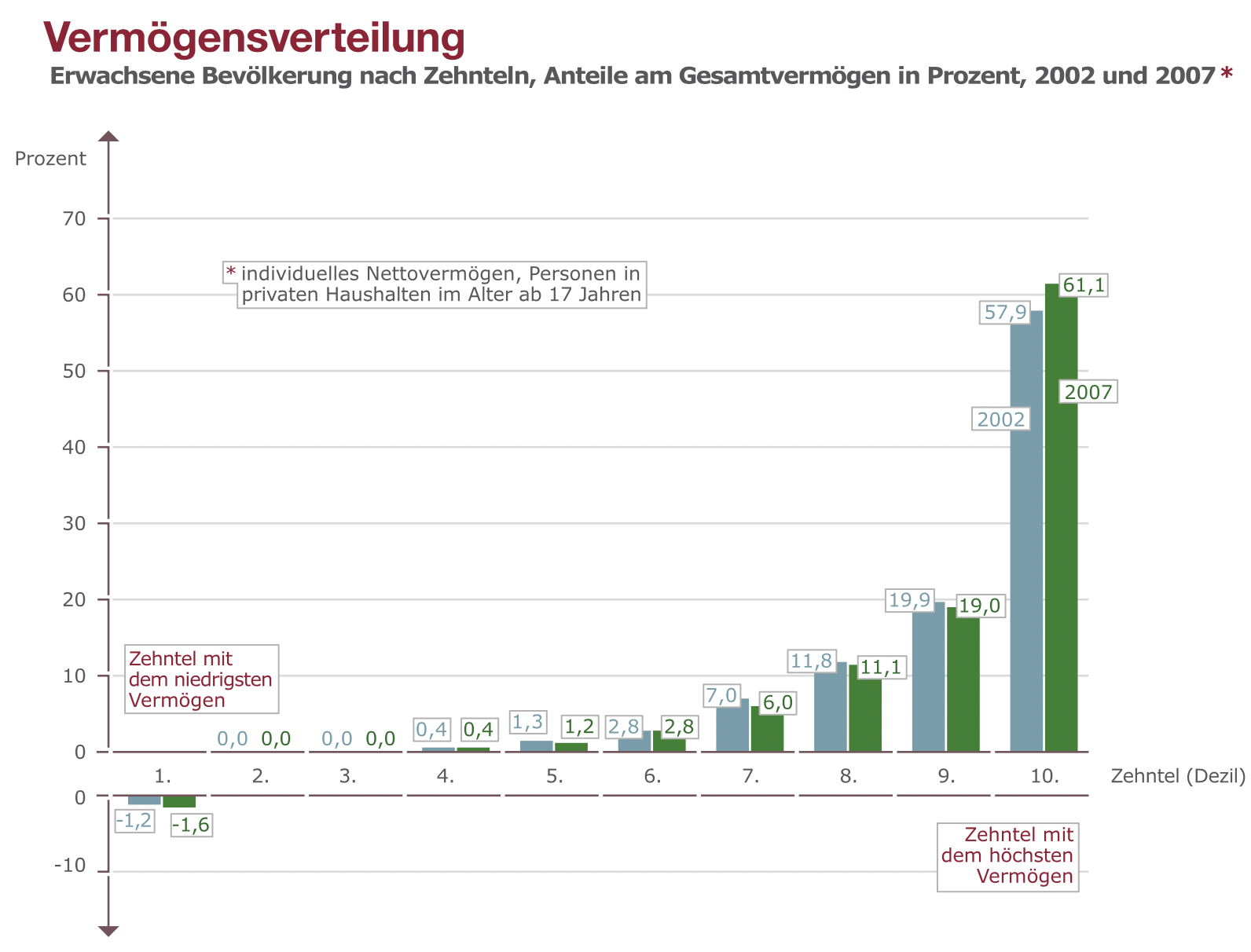
10.What intersecting injustices -- data, economic, epistemic, gender, health, infrastructure, intergenerational, media, procedural, racial, reproductive -- contribute to environmental injustice in this setting?
Germany is a world leader in wealth inequality. In few other countries do the rich posess such a large part of the total wealth. By privatizing the profitable parts of Saxony-Anhalt's chemical industry while the public has to pay for remediation efforts and clean-up operations, the German federal as well as local government are deepening the gap between the rich and the poor. The intransparency of lobbyism in Germany enables powerful, yet often invisble influcence of corporations on government officials.
This is especially pronounced in East Germany, a region with a history of disadvantages which is not well represented in the federal government and thus becomes a giant trash can for toxic waste disposal from international companies.

Philipp Max Baum. 28 November 2021, "EiJ Photo Essay: Middle Germany chemical triangle", Disaster STS Network, Platform for Experimental Collaborative Ethnography, last modified 9 December 2021, accessed 28 November 2024. http://465538.bc062.asia/content/eij-photo-essay-middle-germany-chemical-triangle

5. What have different stakeholder groups done (or not done) in response to the problems in this case?
Remediation efforts of contaminated sites are in progress, but due to the extent of the contamination are often only containment processes rather than clean-ups.
Private companies continue to store toxic waste in former mining shafts.
State of Saxony-Anhalt has exempted buyers of chemical sites from responsibility for the remediation of contaminated sites and has transferred that responsibility to state agencies, coordinated by the LAF, Landesamt für Altlastenfreistellung (State Office for Contaminated Sites exemption).
There seems to be a lack of supervision and regulation of private companies by the state and this is publicly critized by local experts.
The Federal Republic of Germany and EU don’t provide sufficient funds for large scale clean-up projects